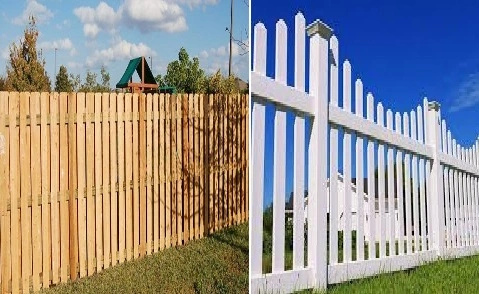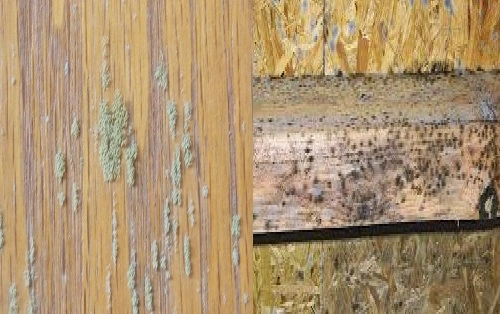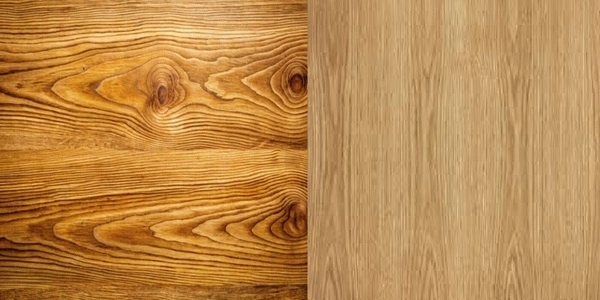When it comes to fencing your property, choosing the right material is key. Two of the most popular options for homeowners in the USA are wood fences and vinyl fences. Both offer distinct advantages and drawbacks in terms of aesthetics, durability, maintenance, cost, and environmental impact. Whether you’re looking to improve privacy, enhance curb appeal, or secure your property, understanding the differences will help you make the best choice for your needs.
This article will compare wood fences and vinyl fences across several critical factors to help you decide which option is right for your home.
What is a Wood Fence?
A wood fence is a traditional and timeless option made from natural wood materials, such as cedar, pine, redwood, or spruce. Wood fences are favored for their classic aesthetic and ability to blend with virtually any landscape.
Types of Wood Fences:
- Privacy Fences: Solid panels for complete privacy.
- Picket Fences: Shorter, decorative fences perfect for front yards.
- Split Rail Fences: Rustic fences often used for large properties.
- Lattice Fences: Decorative designs that add charm and airflow.
What is a Vinyl Fence?
A vinyl fence is made from polyvinyl chloride (PVC), a durable and low-maintenance synthetic material. Vinyl fences have become a popular modern alternative to wood due to their durability and resistance to weather, pests, and decay.
Types of Vinyl Fences:
- Privacy Fences: Solid panels similar to wood privacy fences.
- Picket Fences: Decorative and clean-cut designs for front yards.
- Ranch-Style Fences: Horizontal rails for large properties.
- Decorative Fences: Ornamental vinyl fences with elegant styles.
Wood Fence vs. Vinyl Fence: Key Comparisons
| Feature | Wood Fence | Vinyl Fence |
|---|---|---|
| Aesthetic Appeal | Natural, classic look with warm tones | Clean, modern look with consistent color |
| Durability | Moderate; susceptible to rot and pests | High; resists rot, pests, and weather |
| Maintenance | Requires staining, sealing, and repairs | Low maintenance; occasional cleaning |
| Installation | Easier for DIY; may require regular repair | Slightly complex but long-term stable |
| Lifespan | 10–20 years with proper care | 30+ years with minimal care |
| Environmental Impact | Renewable and biodegradable | Non-biodegradable; not as eco-friendly |
| Cost | Lower upfront cost; higher upkeep cost | Higher upfront cost; low long-term cost |
| Customizability | Highly customizable; can be painted/stained | Limited customization; pre-set colors |
1. Aesthetic Appeal
- Wood Fence: Wood fences provide a natural and timeless beauty that complements almost any property style, from rustic to modern. With its warm tones, wood adds character and charm. Homeowners can paint, stain, or finish wood in countless colors to match personal preferences or landscaping themes. Over time, untreated wood develops a silver-gray patina, which some homeowners find appealing.
- Vinyl Fence: Vinyl fences offer a clean, uniform appearance that is perfect for modern and minimalist aesthetics. Available in white, tan, or gray, vinyl fences maintain their color and finish without fading or chipping. However, customization options are limited, and vinyl lacks the natural appeal of real wood.
Winner: Wood Fence: If you value a classic, customizable, and natural look, wood fences are the better choice.
2. Durability and Lifespan
- Wood Fence: Wood is a strong and durable material, but it is vulnerable to weather, moisture, pests, and rot. Even treated wood will eventually deteriorate without proper maintenance. Depending on the wood type and care, a wood fence lasts between 10 and 20 years.
- Vinyl Fence: Vinyl is highly durable and resistant to moisture, pests, and UV rays. It won’t rot, warp, or splinter, making it ideal for climates with harsh weather conditions. A vinyl fence can last 30 years or more with minimal upkeep.
Winner: Vinyl Fence: Vinyl fences offer superior durability and longevity, requiring little maintenance to stay in excellent condition.
3. Maintenance
- Wood Fence: Wood fences require regular maintenance, including staining, sealing, or painting every 2–3 years to protect against moisture, pests, and weather. Repairs, such as replacing broken boards or addressing rot, are common.
- Vinyl Fence: Vinyl fences are virtually maintenance-free. They only require occasional cleaning with soap and water to remove dirt, mold, or mildew. Vinyl never needs staining or painting, saving time and effort.
Winner: Vinyl Fence: Vinyl is the clear choice for homeowners who prefer a low-maintenance solution.
4. Cost
- Wood Fence: Wood fences have a lower upfront cost compared to vinyl. However, the ongoing costs of maintenance, repairs, and refinishing can add up over time.
- Vinyl Fence: Vinyl fences have a higher initial cost, but they require little to no ongoing expenses. Over time, the investment pays off due to its long lifespan and low maintenance.
Winner: Depends on Budget
- Choose wood if upfront cost is a priority.
- Choose vinyl for a long-term, cost-effective investment.
5. Environmental Impact
- Wood Fence: Wood is a renewable and biodegradable resource, making it an eco-friendly option if sourced responsibly (like FSC-certified wood). However, the treatments used to protect wood (stains, chemicals) can have environmental impacts.
- Vinyl Fence: Vinyl is made from PVC, a non-biodegradable material. While durable, it is not as environmentally friendly as wood and can be difficult to recycle.
Winner: Wood Fence: For environmentally conscious homeowners, wood is the greener option.
6. Installation
- Wood Fence: Wood fences are relatively straightforward to install and are a popular choice for DIY projects. However, ongoing repairs (replacing rotted boards, loose posts) may be necessary.
- Vinyl Fence: Vinyl fences often come in pre-fabricated panels, which require precise installation. While installation is more labor-intensive upfront, vinyl fences remain stable and require fewer repairs.
Winner: Wood Fence: Wood fences are easier to install for DIYers, though vinyl offers long-term stability.
Conclusion: Which is Better for Your Home?
- Choose a Wood Fence If:
- You prefer a natural, classic aesthetic that can be customized with paint or stain.
- You are on a tighter budget and willing to invest time in maintenance.
- Environmental sustainability is important to you.
- Choose a Vinyl Fence If:
- You want a durable, low-maintenance fence that will last for decades.
- You’re willing to invest more upfront for long-term savings.
- You prefer a clean, modern look with minimal upkeep.
Both wood fences and vinyl fences have their strengths and can enhance the beauty, privacy, and security of your property. By evaluating your budget, maintenance preferences, and design goals, you can select the fencing option that best suits your home for years to come.


